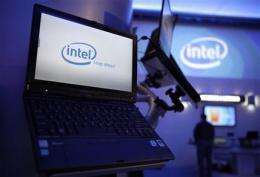Intel, an infrequent acquirer, snaps up Wind River (Update)

(AP) -- Intel Corp. is biting off its biggest acquisition in nearly a decade with an $884 million takeover of Wind River Systems Inc., a software maker with a colorful past.
Wind River's software started as a way to help Francis Ford Coppola edit movies, and has since been used in NASA's Mars rovers, fighter-jet control panels, TV set-top boxes and mobile devices.
Intel is an infrequent acquirer with a history of dabbling in, and retreating from, markets outside its core business of building computer microprocessors. It once even had a toy division that made microscopes and other gadgets before giving up on it because of poor sales.
But Intel has been persistent in trying to expand into the market for the guts of smart phones and other Internet-connected wireless devices. Intel already makes a chip called Atom for such gadgets, and is backing a new operating system, built on the open Linux software and known as Moblin, for mobile devices.
Now buying Wind River marks Intel's latest attempt.
Intel's price of $11.50 per share represents a 44 percent premium over Wind River's closing price of $8 on Wednesday, before the deal was announced. Wind River shares shot up $3.76, or 47 percent, to $11.76. Intel shares gained 19 cents, 1.2 percent, to close at $16.13.
Alameda, Calif.-based Wind River has nearly 1,700 employees and posted a 9 percent increase in sales last year, to $360 million.
Wind River reported Thursday, however, that its sales fell 6 percent to $82.5 million from February through April. Profit ticked up slightly to $561,000, or 1 cent per share. Excluding employee stock compensation expenses and one-time charges, Wind River earned 9 cents per share in the quarter, ahead of the 5 cents per share expected by analysts polled by Thomson Reuters.
Intel has long sought ways to lessen its reliance on chips for the PC and server markets, which are prone to big swings in customer spending. Those markets are lucrative, however: Intel owns 80 percent of the worldwide market for PC-based microprocessors, and they accounted for nearly three-quarters of Intel's $37.6 billion in sales last year. Intel also makes money from chipsets that connect Intel's processors to the rest of the computer, along with memory chips and computer motherboards.
Some of Intel's expansion forays have gone far afield, like its toys that could connect to computers. In other cases, Intel took on challenges that were too big or too slow to pay off, and found itself shedding units for much less than the billions it spent creating them.
For instance, Intel has jettisoned businesses that focused on telecommunications technologies, a type of flash memory and optical networking components. An earlier attempt by Intel to break into the market for processors for smart phones and other handheld devices also ended in defeat. In 2006, Intel sold its communications chip unit, which it had spent years building up through acquisitions, to Marvell Technology Group for $600 million.
The same year, Intel also sold its "media and signaling" business, which included telecommunications motherboards and software, for $75 million. That business included all the assets of a company called Dialogic, which Intel bought for $732 million in 1999.
In a client note, FBR Capital Markets & Co. analyst Craig Berger said Wind River could be Intel's first step in diversifying its business model the way IBM Corp. now sells hardware, chips, software and services.
"If Intel is beginning to diversify its business away from just semiconductors, we would expect a host of similar software- or services-related acquisitions in coming years," Berger said,
One reason Intel wants more diversification is that it's getting hard to rely on continual growth from microprocessors with smaller circuitry. The pace of innovation required to keep up with Moore's Law - the famous prediction by Intel co-founder Gordon Moore that the number of transistors on a chip would double roughly every two years - is getting tough to sustain because of physical limits of how small the circuitry on a chip can be shrunk.
Moore has predicted his axiom might hold true for only another decade or so.
Intel hasn't done many acquisitions since the tech meltdown in 2001, mostly buying little privately held companies. Intel's last big deal close to Wind River's size was the 2000 acquisition of Danish communications chip maker GIGA A/S for $1.25 billion.
---
AP Technology Writer Rachel Metz in New York contributed to this report.
©2009 The Associated Press. All rights reserved. This material may not be published, broadcast, rewritten or redistributed.

















